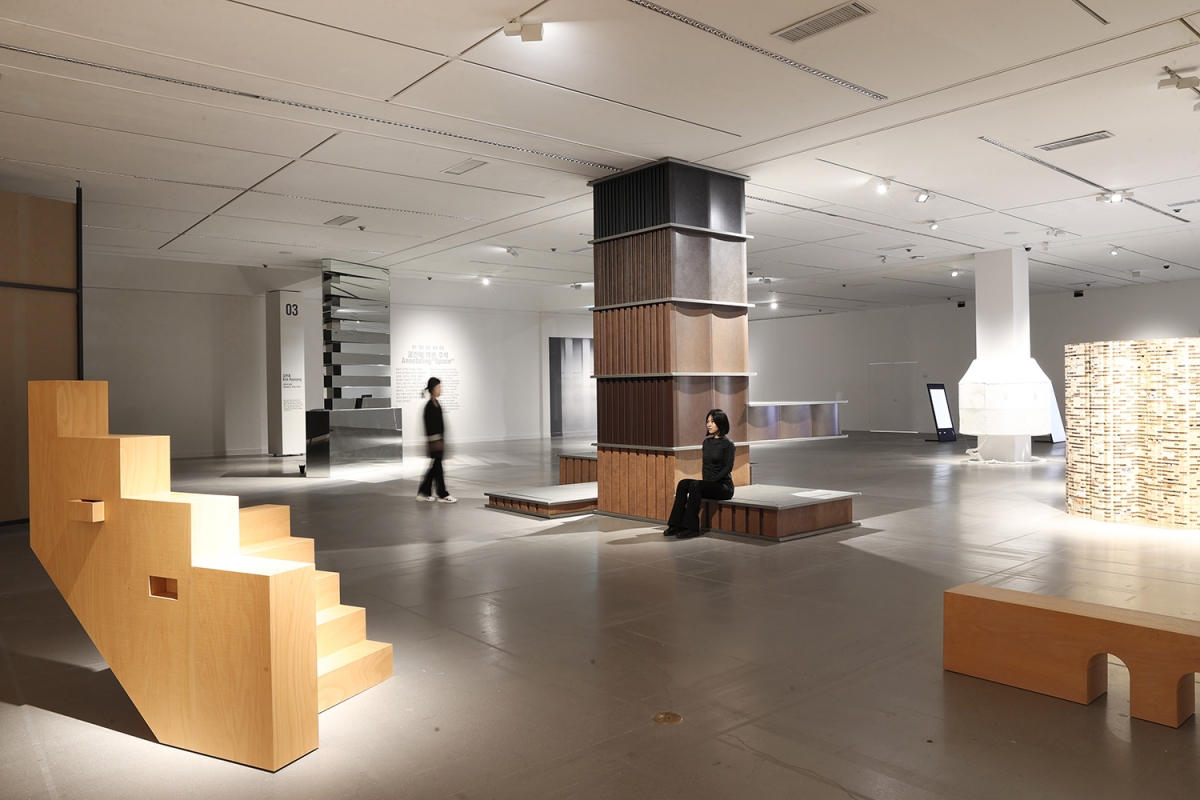SPACE June 2023 (No. 667)

Exhibition view of ‘Young Korean Artists 2023: Annotating the Museum’ / Image courtesy of MMCA
By hosting the ‘Young Korean Artists 2023: Annotating the Museum’, the National Museum of Modern and Contemporary Art Gwacheon (MMCA Gwacheon) is spotlighting the work of thirteen (teams of) emerging artists and their museum space. In its 42nd year, ‘Young Korean Artists’ is Korea’s longest-running and most prestigious programme for emerging contemporary artists. This exhibition is noteworthy for placing emphasis on the ‘search’ as much as on ‘being young’, perhaps more than in the previous year. By broadening the range of genres and media, it selected numerous figures from across architecture and design, and, as the exhibition’s subtitle suggests, the show explores MMCA Gwacheon’s spaces themselves. This gallery, which opened in 1986, has lately been the subject of much discussion concerning the necessity of spatial regeneration. Prior to the full transformation, this exhibition will provide a chance to examine the MMCA Gwacheon in terms of its ‘space’, ‘exhibition’, and ‘experience’ through the perspectives of figures like architects and a furniture designer.
The first part observes the architectural elements of the MMCA Gwacheon under the theme of ‘space’. Kim Hyunjong (principal, ATELIER KHJ) used three columns in the exhibition hall as the elements for displaying his work. Expansion (2023) is one of them, with plates stretched out from the columns wrapped in steel plates so that the audience can sit or lean against them. As a core structure in architecture, columns are often treated as a nuisance and frequently concealed by walls, whereas in this scenography they are vividly revealed and used as devices to compartmentalise the exhibition areas. In Serial Columns (2023) by photographer Kim Kyoungtae, which is a photographic work of an empty exhibition hall, the arrangement and proportion of columns can be carefully identified. In the case of the COM (co-principals, Kim Sejoong, Han Joowon) the MMCA Gwacheon’s towering circular mass, staircase, and the bridges of the lake outside have been appropriated into their work. As a continuation of their practice in spatial and furniture design, Collection of Art Museum Fragments (2023) is here staged like a work of sculpture but also stimulates the imagination when thought of as furniture.
In the second part of the show, graphic designers Kim Dongshin, O Hezin, and architect Chung Hyun (principal, SUPERELLIPSE) disassembled and reorganised items such as posters, brochures, and the exhibition hall’s architectural drawings. From the standpoint that an ‘exhibition’ is not shaped only by the works and artists on display, but also embraces the content and format independently, their works read the format of the exhibition again based on the exhibition’s by-products. The third section is devoted to works that consider the ‘experience’ of museums. Comprised of work by contemporary dancer Cho Hyeongjun and architect Son Minsun, Mu:p resuscitated the rarely used Y-shaped staircase with the installation of a video. As if annotating the original brief, works expand our interpretations of the MMCA Gwacheon, presenting an entirely new experience. The exhibition is on display until Sep. 10.
by Han Garam





